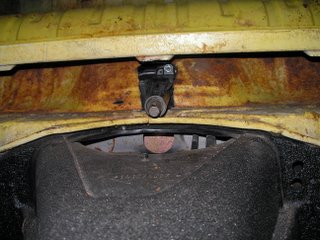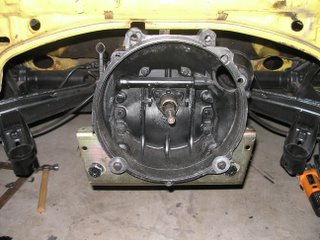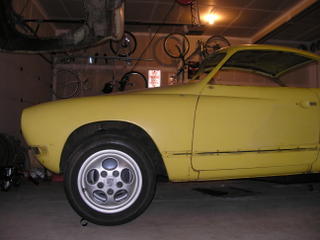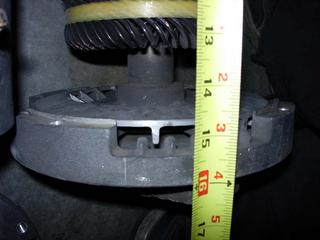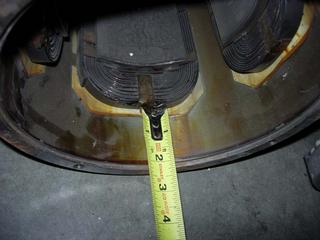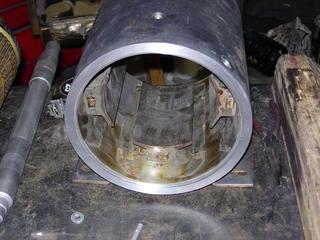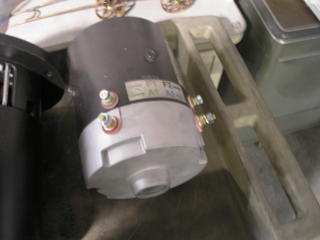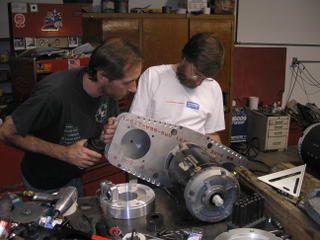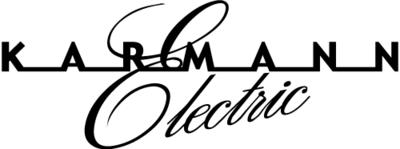Need a bigger hammer?

My answer to this question is usually: "Then we must be doing it wrong!". Well, I hope this case is the exception. Shoehorning a souped-up Vanagon transaxle into my little Ghia was never supposed to be easy, but discovering that this particular tranny ain't compatible with the super-slick Gene Berg Bus-to-Bug transaxle adaptor kit wasn't the news I wanted. The other method that has been used is purveyed primarily by economy-minded parts vendors, who's aftermarket gear is stamped with the infamous Bugpack brand. Basically, one uses adaptor plates to mount the Vanagon tranny a couple of inches higher than stock, cuts a hole through the body, and runs a shiftrod across the top of the tunnel, usually elimating the parking brake in the process... Not a very attractive-sounding option. Armed with several negative reviews and a healthy dose of skepticism, I approached my local aircooled outlet: Autosport International
Jerry's been in business for over 40 years, supplying both the offroad and street rod VW scene, so I trust his recommendations. He introduced the 'spacer block' option to me, that rerouts the shifter rod back down into the original tunnel, but that would be second choice due to inevitable slop introduced by adding another linkage to the setup. The initially unattractive 'over the top' approach depends upon a sandrail-style shifter, which Jerry says is by far the most 'positive feeling' shifter on the market, and the only one he'd consider for speed-shifting a big bus tranny. Also, the instructions claim that the parking brake may be preserved by mounting the shifter at an angle, but I'm interested in fabbing up a custom yoke to pass the shift rod
around the emergency brake. It's either use one of these options, relocate the brake to an elevated bracket, put in an american-style pedal activated parking brake, or rely upon a hydraulic line lock and a prayer, backed up by wheel chocks...
So, emboldened by the wizened advice of a seasoned VW Guru, I plunked down the cash for a Bugpack Bus-to-bug tranny mount kit.
Bugpack quality was readily apparent, as I had to ream out four of the eight mounting holes in order to get things to line up right between my factory fresh transaxle and the never-been-crashed Ghia frame horns.. Now, say what you will about variances between hand-welded chassises, (sic) but such early obstacles do not inspire confidence in adaptor engineering...
The next order of business was cutting a hole to fit the nosecone through precious antique sheet metal. After careful measurement and a test-fit, the ole hole saw came out, and cut a hole only 1/4" off from where it should have been, which was easily corrected (after another test fit). Having recently demolished my Harbor Freight $16 sawzall in a demolition project, this opening had to be enlarged by hand. This was a good thing. With plenteous power, I probably would have hacked right on through the body/pan junction and purposely severed the rear brake line, as it looked like I'd need to open down to the original shift linkage inspection port in order to get enough clearance, and besides, I oughtta replace that brake line anyway.... No; hobbled by cramping fingers and my measly hacksaw blade, I took several swipes at the task, test fitting all along the way. A hump had to be hammered into the body beneath/behind the rear seat, in order to provide clearance for the tall and square bus tranny. Realizing that my grinding, drilling, hammering and manly grunting was echoing through the neighborhood, I closed the garage doors at 9pm and toiled in private... Upon the sixth 'dry fit', the transaxle slid home through an almost perfectly-sized opening, the brake line was intact and in it's stock location, the frame horns had been trimmed by only millimeters, and the body's new hump and hole would be hidden in the final product, yet also easily repairable should that be someday desirable...
(Experienced viewers may note that the lower adaptor is mounted backwards. Well, that's the only way the holes would line up. I'll have to get a bigger rattail file and realign the holes for a final mounting....)
